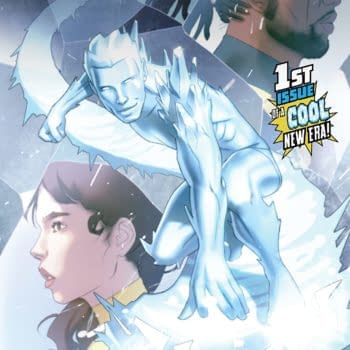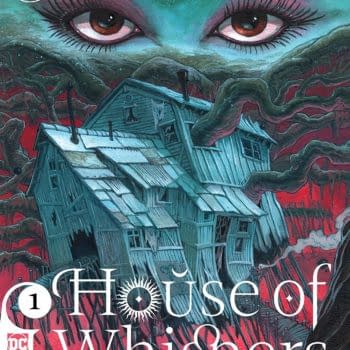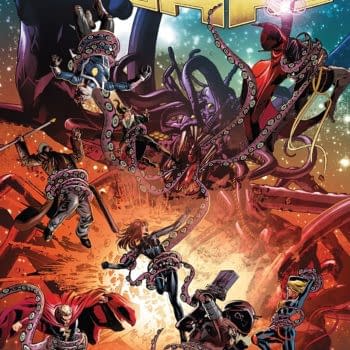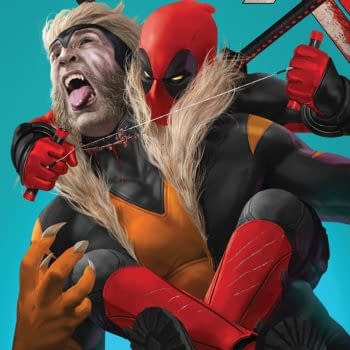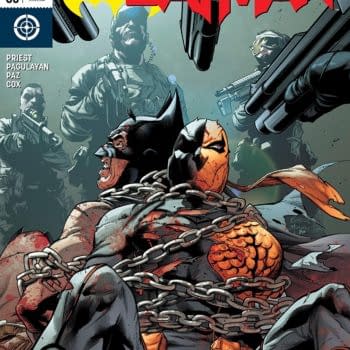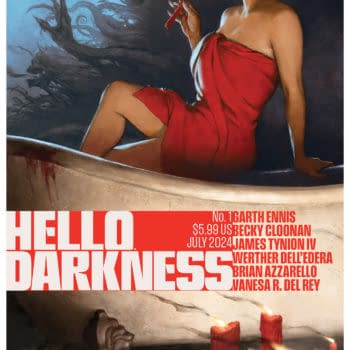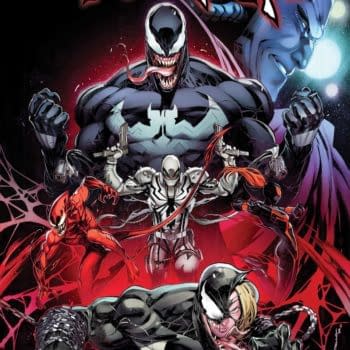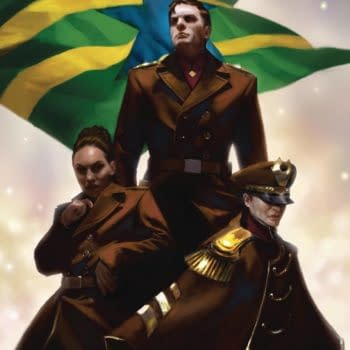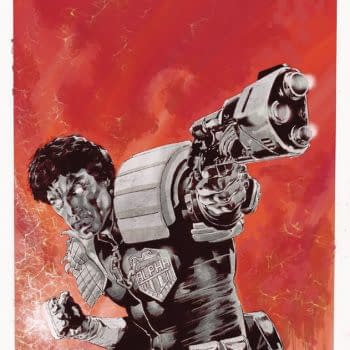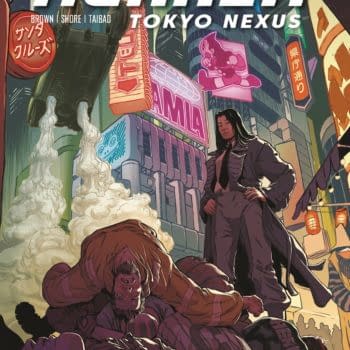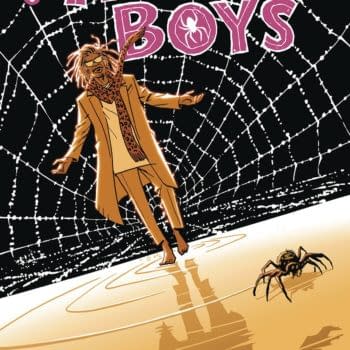Posted in: Comics, Marvel Comics, Review | Tagged: avengers, black panther, chadwick boseman, jack kirby, Marvel Comics, Marvel Studios, ryan coogler, T'Challa
5 Days of Black Panther, Day 1: Volume 1 of the Jack Kirby Series
To continue this exploration through the Black Panther mythos, we are going to revisit the wonderfully wild Jack Kirby series from 1977. I actually covered this one some time back, and, while many of my opinions remain unchanged, some of my views have altered with time.
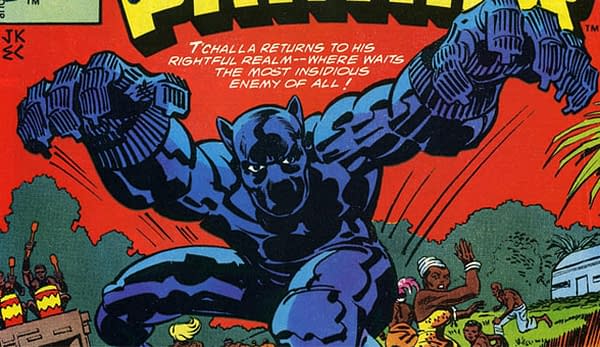
The plot to this collection centers around Black Panther becoming mixed up in the affairs of a group of eccentric treasure hunters/collectors, namely the vicious Princess Zanda and Mr. Little, the latter of whom is indeed a little person. T'Challa and Little stumble across a time-traveling artifact called King Solomon's Frog. It's a small bejeweled brass frog that is also a time machine.
Zanda tries to kill Little and Black Panther for it, and the fight accidentally activates the Frog, bringing forth the Six Million Year Man, a human from the future with power and intellect evolved far beyond what is possible for a person now. After he slays many of Zanda's men, they Panther and Little manage to incapacitate the Six Million Year Man, and they know they must send him back. However, they need the other Frog of King Solomon to do that. There's more than one. They don't have the technology after all.
The trio take the sedated future man to the temple of King of Solomon to find the legendary other Frog, and, after many deadly trials, they find it and send the Six Million Year Man back home.
A guardian of the temple attacks T'Challa and the treasure hunters, and the structure begins to collapse. They manage to escape, but the collector compatriots of Zanda capture Black Panther and Little.
Threatening to actually nuke Wakanda, Zanda and the collectors coerce T'Challa to find the sacred water of a secret civilization of samurai, which apparently holds the key to immortality.
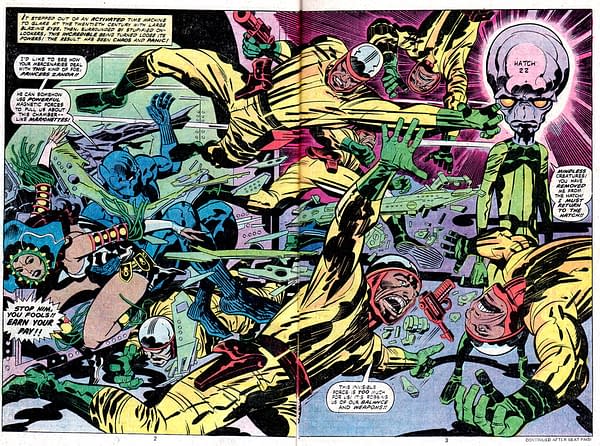
After fighting a yeti and a guardian samurai, T'Challa and Little find the legendary civilization. The defeated guardian samurai wants the Panther to kill him to alleviate his shame, but, of course, the Black Panther is unwilling to follow through with this. While he tries to sort this issue out with the rulers of the hidden city of samurai, Little steals some of the water. This bungles things further, and the Panther manages to negotiate the return of the water to save their own lives.
The two return to the collectors. T'Challa calls Zanda's bluff, citing the dire consequences that she would face from the governments the world over. Little reveals that he had a smaller container full of the sacred water on his person. The collectors break into a brawl for the water, and its vial is broken. After this, T'Challa leaves for his home country.
There is a budding plot about a coup by a Wakandan general named Jakarra. This general exposes himself to raw vibranium, which causes him to seemingly disappear. In the growing crisis, a young royal named Joshua Itobo takes control of Wakanda while T'Challa is still out. This plot is not resolved in this collection, though.
Kirby's Black Panther really is quite unlike any other take of T'Challa or comic in general I've ever read. The out-there and otherworldly plot elements mixed with T'Challa's up-for-anything attitude toward it all create a surreal superhero experience.
It surely took a lot from the adventure and exploration fiction from years before. The venues, plot points and progression, and themes aren't unlike what Raiders of the Lost Ark would bring the to table only a few years later.
The visuals are astonishing. There are many talented artists in the comic scene that have tried to capture the spirit of Jack Kirby's art. While many of these artists have become fantastic artists in their own right, like John Romita Jr., the team of Didio and Giffen, and Mike Allred, no one is quite like Jack Kirby. That's a good thing by the way, because art is about what one can make, not what they can perfectly remake (the current state of Hollywood perfectly encapsulates the problem with constant remakes).
The various monsters and robots that Black Panther fights in this book are unlike anything I've ever seen before. The guardians of the temple of King Solomon, the Six Million Year Man, the Yeti, hell, even the monster that we see the Six Million Year Man fighting in his own timeline are instantly memorable. This is all helped by the vibrant and popping colorists who worked on this book, Dave Hunt, Petra Goldberg, Irene Vartanoff, and Sam Kato.
The pacing is pleasingly brisk. The tendency towards over-explanation and winding dialogue is easily the biggest thrill-killer of Golden and Silver Age comics. Kirby manages to sidestep this by giving us more visual information than textual. He still falls into the over-narration trap at times, but he does it far less than other celebrated writers from the era.
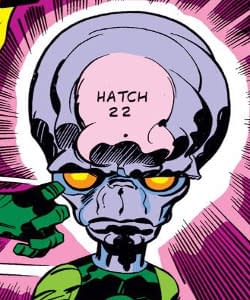
The action sequences are quite cool. There's a fair amount of futuristic laser bolts, martial arts, and things getting blown up or crushed by giant creatures.
If I were to come with some criticisms, which almost feels blasphemous, there are a couple that come to mind.
Black Panther himself almost feels like a vehicle for the story more than a character. He has a couple of moments of personality, but he almost seems to be an analogue for the audience that also manages to resolve the conflict.
Mr. Little brings personality to spare, though. This character is impulsive, obsessive, yet generally well meaning. He also has an endlessly eccentric way of speaking, mostly consisting of exclamations consisting of space terms like "galloping galaxies."
Also, the "nuking Wakanda" threat by Princess Zanda kind of gets shrugged off and not resolved in a satisfying fashion.
Neither of these two problems are deal breakers, and the ride is so fun and strange enough that you're not likely to be too bothered by them.
This comic is easily recommendable. It's a classic. The art and colors are unlike anything you'll ever see. Jack Kirby is the King for a reason, and comics like this are the reason why.
The trade that I read was released in 2005. It may be a little hard to find now. I found a more recent reprint that has the same issues for over twice the price. I say track it down if you can find on sale, or, if you can find the original cheaper printing from 2005, all the better. It's well worth your time, especially if you want to explore the history of the King of Wakanda or the King of Comics.


